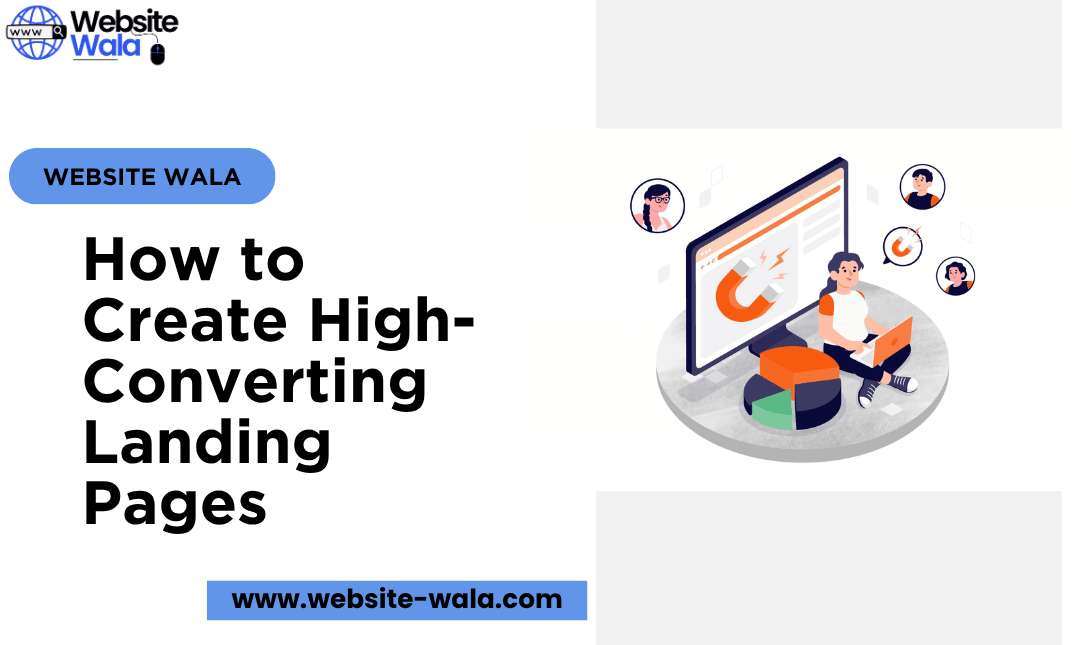
Learn how to create high-converting landing pages with proven design tips, optimization strategies, and digital marketing tactics for online success.
How to Create High-Converting Landing Pages: A Complete Guide
In today’s digital marketing landscape, understanding how to create high-converting landing pages is essential for businesses aiming to boost lead generation, improve website optimization, and drive measurable results. Landing pages play a pivotal role in capturing the attention of visitors and converting them into paying customers. A well-crafted landing page can significantly enhance your conversion rate optimization efforts and contribute to your overall online success.
In this article, we’ll explore actionable design tips, optimization strategies, and practical steps to ensure your landing pages are not just visually appealing but also high-converting.
Why High-Converting Landing Pages Matter
A landing page is often the first point of contact between your brand and potential customers. Unlike standard web pages, landing pages focus on a single objective, whether it’s lead generation, product promotion, or newsletter sign-ups. By learning how to create high-converting landing pages, businesses can:
-
Increase lead generation effectively
-
Improve website optimization metrics
-
Enhance user experience and retention
-
Boost digital marketing ROI
High-converting landing pages streamline the user journey, eliminating distractions, and directing visitors toward taking action.
Key Elements of High-Converting Landing Pages
Understanding the essential elements of landing pages is the foundation of how to create high-converting landing pages. Here are the key components:
1. Compelling Headline
Your headline is the first thing visitors see. It should be clear, benefit-driven, and attention-grabbing. A strong headline sets the tone and communicates the value of your offer.
2. Engaging Subheadline
The subheadline complements your main headline by providing additional context. It reinforces the promise and encourages visitors to continue reading.
3. Persuasive Call-to-Action (CTA)
The CTA is the most critical part of your landing page. Use action-oriented language and make the button prominent. Test different CTA placements to optimize conversions.
4. Visuals and Multimedia
Images, videos, and graphics can enhance engagement. Use visuals that support your message without slowing down page load times.
5. Trust Signals
Include testimonials, reviews, certifications, and security badges to build credibility and reduce friction during the decision-making process.
Design Tips for High-Converting Landing Pages
Effective web design directly influences how visitors interact with your landing pages. Here are some proven design tips:
-
Keep it clean and focused: Minimalism reduces distractions and improves clarity.
-
Use contrasting colors: Make CTAs stand out to guide the visitor’s attention.
-
Responsive design: Ensure your landing pages perform seamlessly on mobile devices.
-
Fast loading speed: Slow pages can drastically lower your conversion rate optimization efforts.
-
Visual hierarchy: Use font sizes, colors, and spacing strategically to highlight key elements.
These design tips ensure your landing pages are not only visually appealing but also drive action.
Optimization Strategies for Maximum Conversions
Once your landing page is designed, optimizing it is crucial. Here are effective optimization strategies for high-converting landing pages:
1. A/B Testing
Test different headlines, images, CTAs, and layouts to determine which combination delivers the best results.
2. Clear Value Proposition
Clearly communicate what users will gain by converting. Avoid vague statements; specificity builds trust.
3. Reduce Form Fields
For lead generation, shorter forms often yield higher conversion rates. Ask only for essential information.
4. Leverage Social Proof
Display testimonials, case studies, or client logos. Social proof increases credibility and encourages conversions.
5. Analyze Metrics
Use tools like Google Analytics or heatmaps to track user behavior. This helps refine website optimization and conversion rate optimization strategies.
The Role of Digital Marketing in Landing Page Success
Knowing how to create high-converting landing pages is only part of the equation. Integrating these pages with your digital marketing efforts ensures consistent traffic and results. Strategies include:
-
Email campaigns: Direct subscribers to targeted landing pages.
-
Paid ads: Use PPC campaigns to drive relevant traffic.
-
Social media promotions: Promote offers and link directly to landing pages.
-
SEO: Optimize landing pages for search engines to attract organic traffic.
Effective digital marketing amplifies the impact of your landing pages and strengthens your lead generation strategy.
Measuring Success of Your Landing Pages
To gauge the effectiveness of your landing pages, focus on key performance indicators (KPIs) such as:
-
Conversion rate
-
Bounce rate
-
Average session duration
-
Click-through rate on CTAs
-
Lead quality
Regularly reviewing these metrics allows you to refine optimization strategies and ensure your landing pages remain high-converting over time.
Common Mistakes to Avoid
Even small errors can impact your landing page performance. Avoid these pitfalls when learning how to create high-converting landing pages:
-
Overcrowded design or too many CTAs
-
Slow loading pages
-
Weak or vague headlines
-
Lack of trust signals
-
Ignoring mobile users
By steering clear of these mistakes, your landing pages will be more effective in driving conversions and boosting online success.
Conclusion
Learning how to create high-converting landing pages is essential for any business looking to maximize lead generation, improve conversion rate optimization, and achieve online success. By combining strategic web design, compelling copy, and targeted optimization strategies, you can create landing pages that not only attract visitors but convert them into loyal customers.
Remember, high-converting landing pages are not built overnight—they require testing, refinement, and a deep understanding of your audience. Apply these design tips and optimization techniques consistently to see measurable improvements in your digital marketing efforts.























